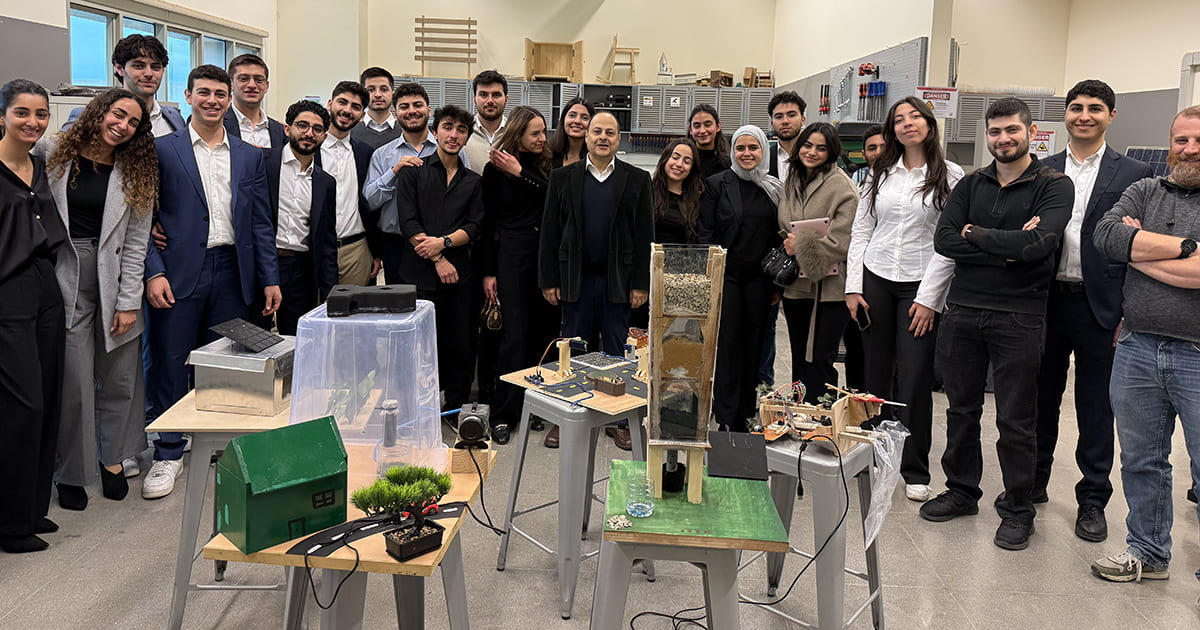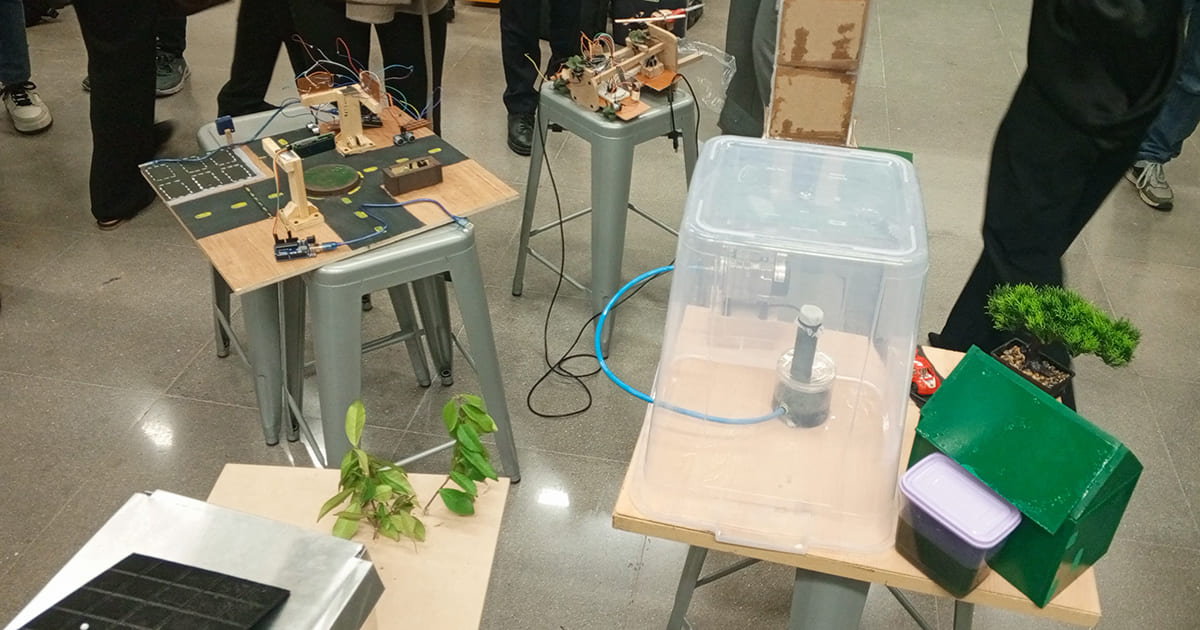Learning in the Heat of Competitions: Engineering Students Push Their Creative Limits
Students reflect on the valuable and unexpected experiences of taking part in international and local competitions.
The constant hum of equipment at the Engineering Labs and Research Center (ELRC) matches the students’ drive to find solutions to everyday problems, but the fruit of their labor is not always restricted to coursework.
Throughout the year, several students from the School of Engineering ventured to new frontiers as they took their projects to local and international competitions, through the seminar class, “Contemporary Issues in Industrial and Mechanical Engineering,” taught by Associate Professor Marc Haddad.
While their experiences were varied, many students agreed that competing with peers from other universities and countries gave them an extra thrill and passion for their field.
Taking part in the international Siemens-Sony Immersive Design Challenge, Hossam Tohme, George Maacaroun and Mario Shebaby reached the second phase and earned a Highly Commended badge for designing a hydrogen tank that can power vehicles using bio-based composite materials.
Their project, titled Eagles Velocity, proposes an alternative to both petroleum-based carbon fiber, which can be harmful for the environment, and electric vehicles, whose Lithium-powered batteries pose mining and disposal risks. Their idea of a hydrogen tank alternatively optimizes manufacturing and environmental sustainability.

From left: Georges Maacaroun, Hossam Tohme and Mario Shebaby.
Tohme appreciated the exposure to a new network, including Siemens staff who offered career advice and guidance. “Before this competition,” he added, “I never saw myself as someone who could lead a team or act as a team leader.”
Another international competition, Texas A&M University’s Invent for the Planet, was a 48-hour hackathon that panned 1,500 participants from 50 universities around the world, including 21 from LAU.
One of the student groups, Team SeaO2, advanced to the second phase of the competition thanks to their prototype of an autonomous underwater drone that harvests seaweed for carbon sequestration—a process that allows for the storing of CO2 to mitigate climate change.

From left: Joe Rizkallah, Nabil Kairouz, Bechara Saliba, Rayan Hachem and Alexandre Massaad.
“While many ideas were impactful in their own right, this one felt different as it had the potential to evolve into an entire ecosystem, addressing a set of interconnected challenges, not just one isolated issue,” explained third-year mechanical engineering student Alexandre Massaad. “That sense of depth and potential for broader impact is what truly drew us in.”
For Massaad his teammates, Joe Rizkallah, Nabil Kairouz, Rayan Hachem and Bechara Saliba, the time crunch was intense, but it pushed them to work together. “It demanded a whole different level of mental stamina and focus, but collaboration is what allowed us to keep going and deliver something we’re genuinely proud of,” said Massaad.
Competing on a national scale, another group of 21 students partook in the 2025 IBDAA Competition, marking LAU’s participation for the second consecutive year. Organized by the American University of Beirut’s Nature Conservation Center, the event was themed Environment in Times of Crisis.
The frustration with maintaining reforestation efforts inspired third-year mechanical engineering major Nabil Kairouz and his teammates to create an AI-guided, multilayered ecosystem reconstruction tool designed to help trees thrive, which they presented at IBDAA.
“The central question was: What if we could plant ecosystems, not just seeds? And that shaped every layer of our proposed solution,” noted Kairouz. Their system, called Bloombyte, leverages AI-driven drones, bioacoustics, microvial seed capsules and real-time satellite feedback to rebuild sustainable, biodiverse ecosystems.
Key highlights of the experience were creative ownership and the chance to reframe a universal challenge. “Unlike a structured course with a clear path and a rubric, this challenge encouraged us to embrace uncertainty and trust our ideas before we had all the answers, while looking for real-world relevance and not just academic accuracy,” said Kairouz. “We had to think like engineers, designers, scientists and storytellers—combining depth with clarity and vision with feasibility.”

